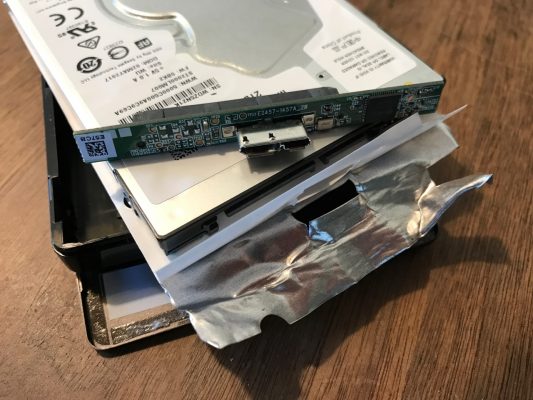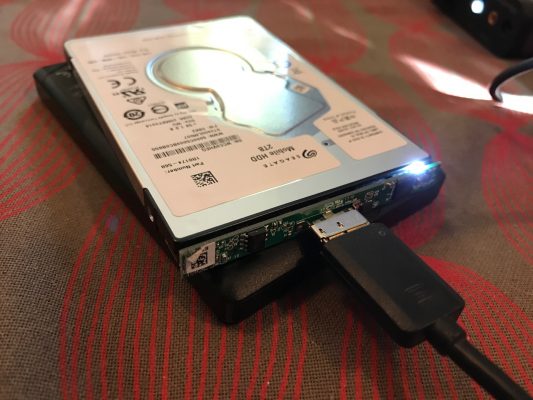Listening to a mother talking about how her 11-yr-old daughter was rude to Amazon Alexa, yelling “Shut up!” at it. Mother admonished her for being rude. Child: “Gosh mom, it’s just a robot, it’s not like it’s an AI or something.” In other words, child makes clear distinction that AI has “real” emotions and that we shouldn’t hurt its feelings, while a simple robot does not. Amazing times.
A Nanosecond Per Foot
It takes light takes about a nanosecond to travel a foot. So if you’re sitting four feet away from me, I’m seeing you as you were 4 billionths of a second ago. Meanwhile, Earth light takes four years to get to Alpha Centauri. So for anyone on a planet in Alpha Centauri watching Earth TV, it would appear that we still have an adult president in office.
Testing Reusable Django Apps with Pytest
Django project dependencies are normally installed with a simple
pip install myapp
But if you want to be a code contributor to a dependency such as a reusable Django app (or if you are writing one), the usual pattern is to:
git clonethat app to another directory, outside of your project- From within your project dir, use
pip install -e /path/to/the/clone
This creates a foo.pth link and/or a foo.egg-link in your project’s virtualenv, rather than copying the code into the project itself, so you can work on the separate repo and have changes reflected in your project in real time.
That’s all well and good, but if you use pytest and need to run tests in the dependency, just running pytest from your project dir won’t find tests that live in the dependency. So can’t you just run pytest from within the dependency’s directory? Not quite – since it’s a Django app, it’s going to assume access to Django itself, and likely to other apps installed in the Django project, such as users. It would be redundant and cumbersome to install Django in the dependency’s directory, and that still wouldn’t solve the problem of access to users etc.
I can’t seem to find mention anywhere of a “best-practice” solution to this dilemma, but after much futzing around and feeling like I must be missing something obvious I tried what should have been plain from the outset:
- From the project dir,
pip uninstall myapp - From the project dir, create a symlink:
ln -s /path/to/the/clone myapp - Add
myappto your.gitignore
Now the separate reusable app appears to Django and to pytest like it’s present in the project, while maintaining physical separation between the project and the dependency. Tests run, and there’s no confusion. Just be sure to .gitignore the symlink.
There’s a gotcha to look out for here: Typically, a reusable app called “myapp” will live in a parent folder that’s also called “myapp”. If you make your symlink to the top-level folder, the imports inside it will not work. You’ll want to create your symlink to the inner folder, e.g.:
ln -s /Users/yourname/dev/myapp/myapp .
Unless I’m mistaken about something, a simple symlink (rather than pip install -e appears to be the easiest way to organize the relationship.
How To Screw Up a Good Backup System
I back up our family computers like crazy, using a combination of Time Machine and cloud backup via Backblaze. But I did something dumb and almost lost our family’s entire history of home videos. Facing estimates of $500 – $1500 for professional data recovery, I stumbled on an awesome hack that saved the day.
Background
All of our computers’ internal hard drives get a dedicated external Time Machine, and we use Backblaze for extra insurance, so our data is safe in the cloud in case of fire, theft or flood. But we also have a few external hard drives that store things like large music collections and our home videos. The external drives back up to Backblaze only (no Time Machine).
All of that has been working hunky dory for years, and I felt confident we were safe. Then, a week ago, I realized that the drive that stores our family videos (“Gorgonzola”) would no longer mount, with any cable, on any of our machines. Yikes! So I turned to Backblaze for a restore, only to find it wasn’t showing up there either! Double yikes, freakout.
What Happened
At some point in the distant past, I did something dumb, though I didn’t realize it was dumb at the time – I realized I had lots of extra space on Gorgonzola and decided to let that drive do double-duty, as a Time Machine drive for a laptop. What I didn’t take into account was the fact that Backblaze has a reasonable rule – they don’t back up your backups. So when Backblaze detected that Gorgonzola was now a Time Machine drive, it dropped it from the manifest. I never noticed it had been dropped.
So now I’d realized that I had NO backup available anywhere for this precious, unreplaceable data. So I called some data recovery services, and got estimates ranging from $500 – $1500. The data was important enough to me that I’d pay that ransom, if it came to it. But of course I didn’t want to.
So Crazy It Just Might Work
The next day, I stumbled on a brilliant suggestion: Often, when a drive won’t mount, it’s because the USB controller circuit board inside the drive case has gone south, and that the drive itself is fine. Solution: Purchase an identical drive, take them both apart, and swap the controller chips. Brilliant! Found an identical drive on Amazon for $100 (Seagate Backup Plus Slim), and went for it.
Prying the case open and removing the drives turned out to be easier than expected (YouTube video), and the controller chips slipped off easily. Quick swaperoo, and lo and behold, it worked! Gorgonzola showed up as normal, and I’m rescuing my data right now. Of course, both drives were destroyed in the process, but at this point, I don’t care.
Yay, internet.
Django template tag to display latest git commit, date and tag in template
I found a few references to bits and pieces of this in various places, but this snippet ties all three bits of information together in a single string, and accounts for calling the path to the git repo from anywhere (which tends to work “magically” on localhost but breaks on servers).
If you don’t use git tags, season to taste.
1 2 3 4 5 6 7 8 9 10 11 12 13 14 15 16 17 18 19 20 21 22 23 24 25 26 | @register.simple_tagdef git_ver(): ''' Retrieve and return the latest git commit hash ID and tag as a dict. ''' git_dir = os.path.dirname(settings.BASE_DIR) try: # Date and hash ID head = subprocess.Popen( "git -C {dir} log -1 --pretty=format:\"%h on %cd\" --date=short".format(dir=git_dir), shell=True, stdout=subprocess.PIPE, stderr=subprocess.STDOUT) version = head.stdout.readline().strip().decode('utf-8') # Latest tag head = subprocess.Popen( "git -C {dir} describe --tags $(git -C {dir} rev-list --tags --max-count=1)".format(dir=git_dir), shell=True, stdout=subprocess.PIPE, stderr=subprocess.STDOUT) latest_tag = head.stdout.readline().strip().decode('utf-8') git_string = "{v}, {t}".format(v=version, t=latest_tag) except: git_string = u'unknown' return git_string |
Then, in your template, you can simply:
1 | {% if user.is_superuser %}{% git_ver %}{% endif %} |
django-todo 1.6 released
I’m pleased to announce the release of django-todo 1.6, now with “Anyone” ticket support and py2/3 guarantee via Travis. Now available on pypi!
Django-Todo is a multi-user, multi-group todo/ticketing system for Django projects.
GoPro Time Lapse: Stinson Beach
Last weekend at Stinson Beach I attached a GoPro to a tree and had it shoot one image every 5 seconds for a couple of hours. Later compiled the image into a 29fps half-speed video in GoPro Studio. Not sure why I enjoy making these so much; something oddly satisfying about the process.
View 403, 404, 500 with media in Django DEBUG mode
When working with Django in DEBUG mode, it can be tough to see your 403, 404, and 500 views, since they raise visible stack traces instead of the UX the end user will see. But if you turn DEBUG off, runserver’s local media serving is disabled because it’s designed to work only with DEBUG = True. The solution is scattered throughout the Django docs, and I couldn’t find it compiled into one compact code block anywhere – just reference the handling functions directly from the end of your urls.py:
1 2 3 4 5 6 7 | if settings.DEBUG: from django.views.defaults import server_error, page_not_found, permission_denied urlpatterns += [ url(r'^500/$', server_error), url(r'^403/$', permission_denied, kwargs={'exception': Exception("Permission Denied")}), url(r'^404/$', page_not_found, kwargs={'exception': Exception("Page not Found")}), ] |
And voila, your 403.html, 404.html, and 500.html templates will be displayed in full glory for developers.
Remove Duplicates, Fix Broken Album Art in iCloud Music Library
Apple Music + iCloud Music Library is a brilliant pairing, and finally lets us access our personal music collections from anywhere. But it’s not without its warts – duplicated tracks and bad/missing cover art has been a sore spot for iCloud Music Library users since the service launched. In my first piece for Medium.com, I walk readers through the reasons – and the fixes – for those two problems.
DjangoCon US 2015 – Managing Identities: LDAP, Google Directory, and Django
Video of my Djangocon 2015 presentation has been posted:
in case you’re interested in a glimpse of the kinds of problems I’ve been wrestling with over the past six months (I’m on to other projects now). Warning: This is a really dry topic (tried to juice it up the best I could).
Would love to present again, but on a less academic topic…



